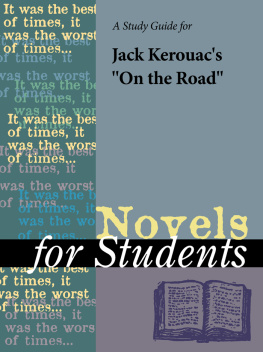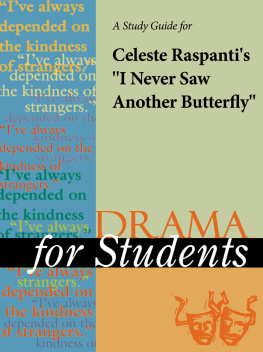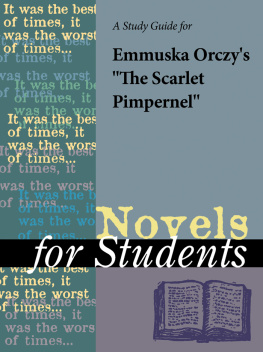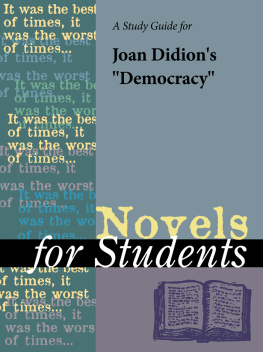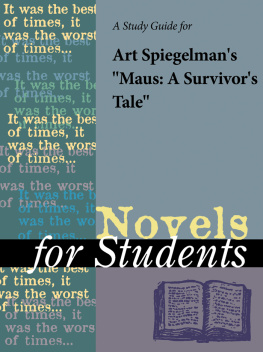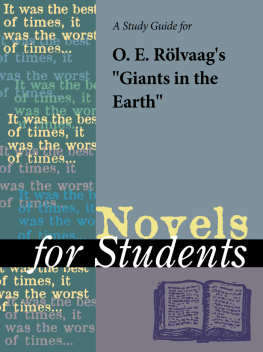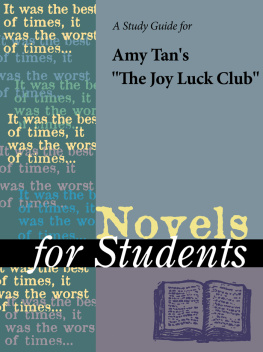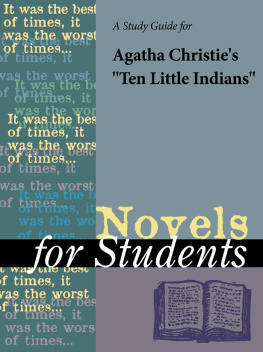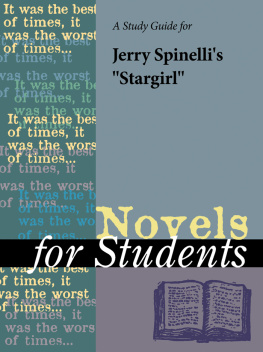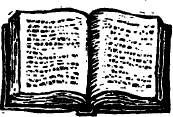TABLE OF CONTENTS
Guide
Novels for Students, Volume 8
Staff
Series Editor: Deborah A. Stanley.
Contributing Editors: Peg Bessette, Sara L. Constantakis, Catherine L. Goldstein, Dwayne D. Hayes, Motoko Fujishiro Huthwaite, Arlene M. Johnson, Angela Yvonne Jones, James E. Person, Jr., Polly Rapp, Erin White.
Editorial Technical Specialist: Tim White.
Managing Editor: Joyce Nakamura.
Research: Victoria B. Cariappa, Research Team Manager. Andy Malonis, Research Specialist. Tamara C. Nott, Tracie A. Richardson, and Cheryl L. Warnock, Research Associates. Jeffrey Daniels, Research Assistant.
Permissions: Susan M. Trosky, Permissions Manager. Maria L. Franklin, Permissions Specialist. Sarah Tomacek, Permissions Associate.
Production: Mary Beth Trimper, Production Director. Evi Seoud, Assistant Production Manager. Cindy Range, Production Assistant.
Graphic Services: Randy Bassett, Image Database Supervisor. Robert Duncan and Michael Logusz, Imaging Specialists. Pamela A. Reed, Photography Coordinator. Gary Leach, Macintosh Artist.
Product Design: Cynthia Baldwin, Product Design Manager. Cover Design: Michelle DiMercurio, Art Director. Page Design: Pamela A. E. Galbreath, Senior Art Director.
Copyright Notice
Since this page cannot legibly accommodate all copyright notices, the acknowledgments constitute an extension of the copyright notice.
While every effort has been made to secure permission to reprint material and to ensure the reliability of the information presented in this publication, Gale Research neither guarantees the accuracy of the data contained herein nor assumes any responsibility for errors, omissions, or discrepancies. Gale accepts no payment for listing; and inclusion in the publication of any organization, agency, institution, publication, service, or individual does not imply endorsement of the editors or publisher. Errors brought to the attention of the publisher and verified to the satisfaction of the publisher will be corrected in future editions.
This publication is a creative work fully protected by all applicable copyright laws, as well as by misappropriation, trade secret, unfair competition, and other applicable laws. The authors and editors of this work have added value to the underlying factual material herein through one or more of the following: unique and original selection, coordination, expression, arrangement, and classification of the information. All rights to this publication will be vigorously defended.
Copyright 2000
The Gale Group
27500 Drake Rd.
Farmington Hills, MI 48331-3535
All rights reserved including the right of reproduction in whole or in part in any form.
ISBN 0-7876-3827-7
ISSN 1094-3552
Printed in the United States of America.
10 9 8 7 6 5 4 3 2 1
On the Road
Jack Kerouac
1957
Introduction
The literary movement known as the Beat Generation exploded into American consciousness with two books in the late 1950s. The first, Howl and Other Poems by Allen Ginsberg, was published in 1956. The book achieved notoriety when poet and bookstore owner Lawrence Ferlinghetti went to trial for selling it in San Francisco. The second book had an even more profound cultural effect when it was published. Jack Kerouac's On the Road, published in 1957, was viewed as nothing less than a manifesto for the Beat Generation.
On the Road is the story of two young men, Sal Paradise and Dean Moriarty, who travel frantically back and forth across the American continent seeking thrills. The novel is actually a thinly veiled account of Kerouac's own life in the late 1940s, when he fell under the spell of a charismatic drifter named Neal Cassady (represented by Mori-arty in the novel). Every episode in the novel was inspired by real-life events. The book, which would probably be considered rather tame today, shocked readers in 1957 with its depiction of drug use and promiscuous sex. Many critics attacked the work as evidence of the increasing immorality of American youth. Other critics saw it as a groundbreaking work of originality. American readers, fascinated with the bohemian lifestyle of the characters, turned the novel into a best-seller.
The Beat literary movement was short-lived. Most of the work Kerouac published in the 1960s had been written during his creative peak in the 1950s. Beat literature retains its popularity decades later because the writers of the Beat Generation must ultimately be judged by their work, not by any real or imagined influence on popular culture. Allen Ginsberg's poetry is still revered. The nightmarish visions of William Burroughs continue to influence post-Modern writers. Finally, Kerouac's On the Road is still a campus favorite, and continues to draw scholarly criticism.
Author Biography
Kerouac was born on March 22, 1922, in Lowell, Massachusetts. His parents, Leo and Gabrielle, were French-Canadian immigrants. "Ti Jean" (Little Jean), as he was known as a child, lived in the shadow of his sickly, angelic brother, Gerard. Gerard was barely ten years old when he died of rheumatic fever, and his death had such a profound effect on Kerouac that he later wrote a novel about his brother entitled Visions of Gerard. Kerouac had a lively imagination as a boy. He scripted his own "movies" and acted them out in front of the family Victrola and later illustrated them in his own comic books. He created a complex baseball game with an ordinary deck of playing cards that he would play throughout his life. In the early years of his life, Kerouac was a solitary child with few friends. However, he soon grew into a handsome, athletic young man.
Kerouac excelled at football in high school and attracted the attention of coaches from several major colleges. An athletic scholarship to Columbia brought him to New York City. He dropped out of Columbia when World War II started and enlisted in the navy, but he was quickly discharged for "indifferent character" because he refused to follow orders. He ended up enlisting in the merchant marine and worked on a ship that crossed the treacherous, submarine-infested waters of the North Atlantic. After the war, he returned to New York City to write and study. It was during this period that he met other bohemians, such as Allen Ginsberg and William Burroughs. It was at this time that the literary phenomenon known as the Beat Generation was born.
The Beat Generation espoused freedom, individuality, and experimentation in living and in literature. Kerouac discovered what he believed was an icon for this generation when he met Neal Cassady, a wild, magnetic, young drifter from Denver, in 1946. Although Kerouac recognized that Cassady was a manipulative pseudo-intellectual, he admired Cassady's zest for life and hunger for learning. Cassady ultimately inspired the character of Dean Moriarty in On the Road. Kerouac spent the next several years traveling across the country, both with and without Cassady.
In 1950, Kerouac's first novel, The Town and the City, was released to lukewarm reviews. The indifferent reaction to his first novel, although discouraging, did not prevent him from writing. Although his second (and most popular) novel,

